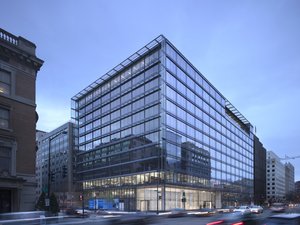
This contributed article comes from Clint Vince, chair of international law firm Dentons’ U.S. energy practice and co-chair of its global energy sector. Vince aims to provide a framework for approaching smart-city infrastructure using data. It has been edited for length.
A smart city is one that modernizes physical, digital and social infrastructure and that integrates all essential services for the benefit of its citizens by harnessing advances in sustainable technology to make delivery of those services more efficient, innovative, equitable and exciting.
All three of these aspects of city infrastructure are essential. Yet in discussions about smart cities, the social component frequently receives far less attention than the physical or the digital. This is puzzling because a smart city is not about technology for technology’s sake. The point of a smart city is to better the lives of the city’s residents and businesses by applying advanced technologies and data-driven decisions and operations.
There may be a number of reasons why incorporation of social infrastructure lags behind consideration of the physical and digital components as cities modernize their systems. One reason may be that the average city resident doesn’t give much thought to the vast network of infrastructure behind the majority of mundane daily activities – the power source that keeps the lights on, the water running through pipes, street lights, traffic signals, trash collection. For the most part, they don’t really want to understand how it all works – they just want to know that it does work.
Another reason might be the perception that the social component is way out ahead and that it is the physical infrastructure that lags. Large physical infrastructure projects take time and are expensive, but people are quick to adopt any number of new apps on their smart phones that are marketed as helping to solve immediate problems such as parking, finding a convenient means of transportation, mapping a route to avoid traffic congestion or ordering food delivery.
The goal is the optimization of city resources – a substantial reduction in guesswork and inefficiencies in city and community operations.
But these apps, however convenient, are not what make a city “smart.” A truly smart city is one that has a modernized electrical grid and an advanced telecommunications system as the backbone supporting other major applications. These include sensors and other new and sophisticated technologies that enable coordination of services, such as real-time management of traffic patterns and public transportation options, public safety and emergency response, and delivery of power and water. These sensors enable operational decisions that are data-driven. This does not mean that all systems are automated, although many will be. The goal is the optimization of city resources — a substantial reduction in guesswork and inefficiencies in city and community operations, so that city services are more equitably distributed and, importantly, more accessible to the city’s inhabitants.
How does a city begin to leverage data for the benefit of its residents? Even as cities work to modernize major infrastructure, much can be done by leveraging existing technology and data. Open data policies help to move a city in the right direction, but this is only one step. An open data policy is helpful to the extent that the city understands what data it has and where that data resides, knows what it would like to use the data to accomplish, and has a procedure in place to share data across operations and to protect data that is potentially sensitive or that is already subject to privacy and use regulations.
Even if a city does not yet have an open data policy in place, there are opportunities to put some existing data and technologies to work in a manner that enables smarter city operations. To begin, a city should assess what data it already has available across city departments and how that data is collected and used. It helps to identify data that may be used without running afoul of privacy protections that are already in place, as well as the useful life of that data and any redundancies in data collection. It also may help uncover areas where collection policies and protections need to be tightened in order to avoid citizens’ and businesses’ objections to the use of data for alternative purposes.
Because of the siloed nature of many city operations, leaders often do not realize the wealth of information that is already collected on a regular basis. One frequently cited example is public transportation. Most city buses have cameras installed for the safety of passengers and riders. The cameras pick up video feed as the vehicles traverse the city. The same information gathered along those routes could potentially be used not only to monitor passenger safety, but also the conditions of roads, buildings, neighborhoods, street lights, traffic, pedestrian activity, school zones and more.
With this information in hand, city departments can more effectively schedule maintenance, dispatch public safety officers, manage traffic and so on — all utilizing resources already within a city budget, and providing immediate, and visible, benefit to residents. For elected leaders of cities and communities seeking to become “smarter” by modernizing services and operations, leveraging data in this manner can go a long way toward winning the confidence of constituents who will use the services and ultimately be asked to pay for them. By focusing early attention on the social infrastructure component, even while exploring the potential for major upgrades to physical infrastructure and deploying new technologies, city leaders can make clear that their central goal is improving the lives of city residents.




